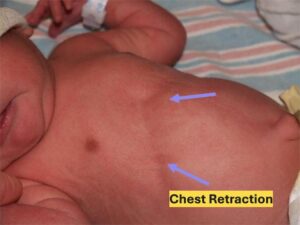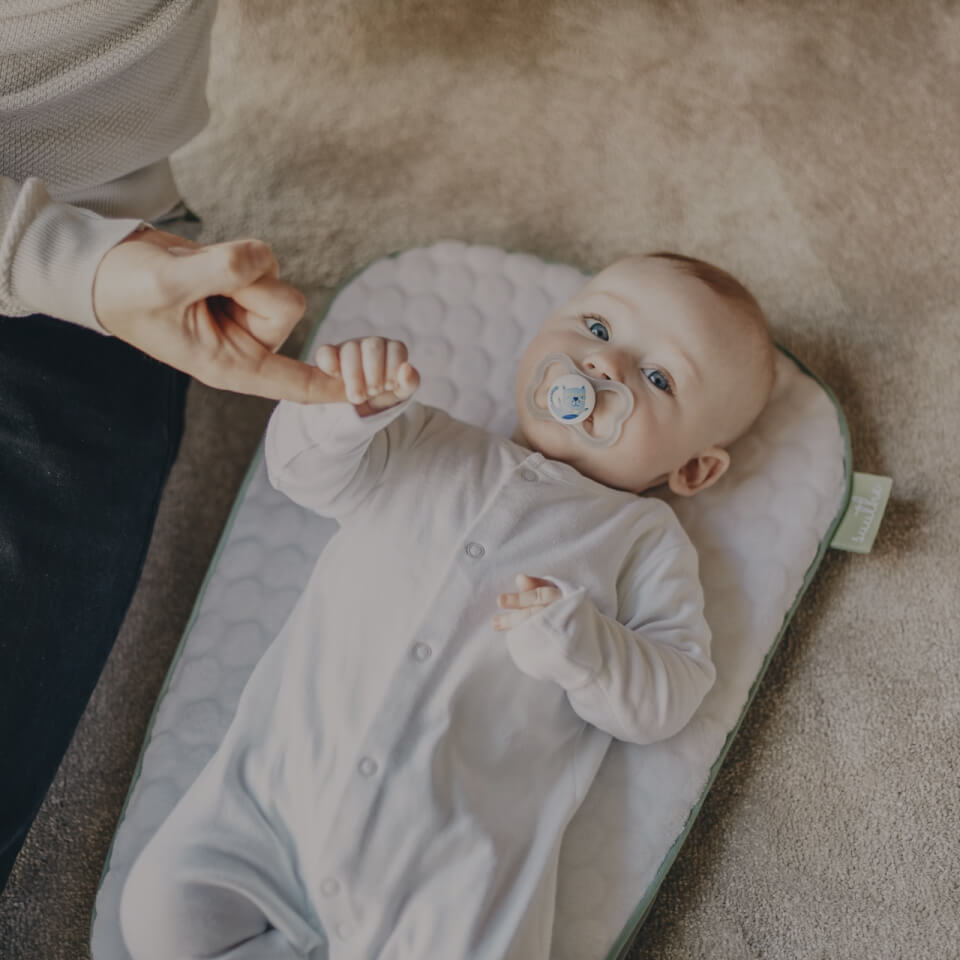As parents, it’s natural to worry when our little ones fall ill. Babies can’t tell us what’s wrong, so we must rely on signs and symptoms to gauge their health. Knowing when to seek medical help is crucial for a baby’s wellbeing.

Identifying Serious Symptoms in Babies
Recognizing serious symptoms in babies is crucial for parents and caregivers. Certain signs require immediate medical attention to ensure prompt treatment and prevent complications.
High Fever: When to Worry
A fever in babies can be concerning.
- For infants under 3 months, a temperature of 100.4°F (38°C) or higher needs urgent medical care.
- For infants age 3 – 6 months old, has a temperature up to 100.4°F (38°C) and seems sick, it is advisable to have a doctor’s evaluation.
- In older babies, a fever lasting more than 3 days also requires a doctor’s evaluation.
Other red flags include:
• Fever with lethargy or irritability
• Refusal to eat or drink
• Signs of dehydration (dry mouth, no tears, fewer wet diapers)
Parents should trust their instincts. If a baby seems unusually sick with a fever, it’s best to seek medical advice.
Rashes and Their Implications
Not all rashes are cause for alarm, but some can signal serious conditions.
Parents should be vigilant about dangerous rashes in their children. If your child exhibits any of the signs listed below, it’s essential to seek a doctor’s evaluation promptly.
1. Tiny red or purple spots that don’t blanch when pressed (Glass Test)
2. Rashes accompanied by fever or other symptoms
3. Blisters or painful, swollen skin
4. A rash that spreads quickly or causes the baby significant discomfort
5. Rashes that look like coffee grounds may indicate internal bleeding

Glass Test
If a baby seems unusually sick with a rash, it’s best to seek medical advice immediately.
Respiratory Difficulties and Warning Signs
Breathing problems in babies can be scary and potentially dangerous. Signs of respiratory distress include:
1. Rapid breathing
2. Grunting or wheezing sounds
3. Chest retractions (skin pulling in between ribs)
4. Blue tinge to lips or skin

If a baby shows these symptoms, parents should seek emergency care. Trouble breathing can indicate serious conditions like pneumonia or bronchiolitis.
Symptoms and Warning Signs of Dehydration
- Sunken fontanelle: The soft spot on the top of a baby’s head is sunken in
- Few or no tears: Babies cry without tears when they are dehydrated
- Dry mouth: A baby’s mouth, lips, tongue, or throat are dry
- Dark yellow urine: A baby’s urine is dark yellow or brown
- Fewer wet diapers: A baby has fewer than three wet diapers per day
- Sunken eyes: A baby’s eyes appear sunken
- Irritability: A baby is cranky or irritable
- Drowsiness: A baby is drowsy or hard to wake
- Pale skin: A baby’s skin appears pale
- Less energy: A baby has less energy than usual
- Cold hands and feet: A baby’s hands and feet appear cold and blotchy
- Extreme thirst: A baby is extremely thirsty
Responding to Your Baby’s Symptoms
Knowing how to respond to your baby’s symptoms can help you provide the best care. Quick action for serious issues, careful monitoring, and safe home remedies are key ways to manage your baby’s health concerns.
Immediate Actions for Acute Symptoms
If your baby has a high fever or severe rash, quick action is crucial. For fevers over 100.4°F (38°C) in babies under 3 months, call the doctor right away.
Breathing problems or extreme lethargy are emergencies – seek help immediately. If your baby shows signs of dehydration, it is best to have a doctor’s evaluation.
For less urgent concerns, parents can try cooling a feverish baby with
- Lukewarm bath (a bath with water that is neither hot nor cold, but rather a comfortable temperature for bathing).
- Hydration : Keeping the baby hydrated is very important.
- Tepid sponging – temporarily lowering their body temperature through evaporation.
- Dress the child in light clothing.
- Start Antipyretics as per child’s weight. The recommended dosage of paracetamol is 15mg/kg every 6 hourly.
- Keep the room cool and well-ventilated.
Here are some tips for tepid sponging a baby:
- Water temperature: Use lukewarm water that’s between 90°F (32°C) and 95°F(35°C). Avoid using cold water, ice, or rubbing alcohol.
- Sponging areas: Sponge the child’s forehead, neck, armpits, and groin. Start with the front of the body and move to the back.
- Sponging time: Sponge for 15 to 30 minutes. Keep sponging continuously. Do not keep a piece of cloth over forehead or tummy.
- Stop sponging if the child starts shivering or turns blue.
- Drying: Dry the child immediately after sponging to prevent chills
If something seems wrong, it’s better to check with a doctor.
Monitoring and Recording Symptoms
Keeping track of symptoms helps parents and doctors understand what’s happening. Use a notebook or smartphone app to log:
- Temperature readings
- Feeding times and amounts
- Diaper changes
- Sleep patterns
- Medication given (if any)
Note when symptoms started and any changes. This info can help spot trends and guide treatment decisions.
Regular checks are key. For fevers, check every 4-6 hours. Watch for signs of dehydration like fewer wet diapers or a sunken soft spot on the head.
Useful Home Remedies
Safe home care can often help manage mild symptoms. For congestion, use saline drops and a nasal aspirator to clear the nose. A cool-mist humidifier can ease breathing and coughing.
For mild fevers, dress the baby in light clothing. Keep the room cool but not cold. Offer extra fluids to prevent dehydration. Breast milk or formula is best for babies under 6 months.
Skin-to-skin contact can comfort a fussy baby and may help regulate body temperature.
Gentle massage or rocking can also soothe discomfort. Always check with a doctor before using any over-the-counter medications or remedies.
When to Seek Emergency Medical Care

Some baby symptoms require urgent medical attention. Knowing when to go to the emergency room can be crucial for your baby’s health and safety.
Critical Conditions Requiring Urgent Response
Fever in babies under 3 months needs immediate care. A temperature of 100.4°F (38°C) or higher is serious in young infants.
Breathing problems are another red flag. If your baby is struggling to breathe or has blue lips, call 911 right away.
Severe dehydration is dangerous. Signs include:
• No wet diapers for 6+ hours
• Sunken soft spot on the head
• Dry mouth and eyes
• Listlessness
Seizures or convulsions always need emergency care. Other urgent symptoms include:
• Uncontrolled bleeding
• Severe burns
• Head injuries with vomiting or confusion
Understanding Pediatric Emergency Protocols
Emergency rooms have special procedures for babies. Triage nurses check vital signs quickly and prioritize serious cases.
Doctors may run tests like:
• Blood work
• Urine samples
• X-rays or scans
Be ready to give your baby’s medical history and a list of any medications. The ER team will explain treatments and next steps clearly.
Follow-up care is important after an ER visit. The doctors will give instructions for home care and when to see your regular pediatrician.
